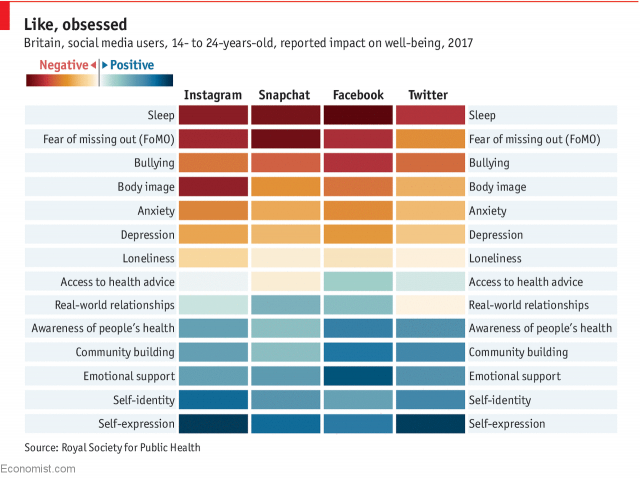That moment when you see all the posts from the conference you had to miss. Sigh, you should be there.
Or when your peer’s Instagram aesthetic is seemingly so perfectly frequent. Yours just are not enough.
When it’s midnight and you’re still scrolling LinkedIn, looking to see everyone’s new accomplishments. You’ve got nothing.
The moment you’re invited to a business dinner and say yes even though you are mentally exhausted and jet-lagged. How can you say no and then see all the fun stories on Instagram?
Refreshing your email every five minutes to make sure you didn’t miss anything. It’s officially part of the daily thumbing and tapping.
The fear of missing out (FOMO) is real and has become an epidemic because of social media.
FOMO can be dangerous. But, when you know what to look for, FOMO is reversible.
It’s time to ditch that FOMO and switch to embracing JOMO, or the joy of missing out.
The problem? It’s harder to take the healthier, self-care route.
Marketers Recognizing FOMO, Finding JOMO
Last year, Ai Addyson found herself at a pivotal and rising point in her social media marketing career.
On one hand, she was breaking through the barriers of diversity, time zones, and building a popular personal brand on her social channels from ground zero.
But her wealth of success was costing her health and happiness.
She decided to turn her fear into joy with a little self-care.
“As an entrepreneur and a social media practitioner, I developed a tendency to work all the time, especially during the early stage of our business, we are our business, and our business is us,” Addyson said.
“I remember feeling so burned out I couldn’t even touch my computer anymore,” she added. “Exhaustion took over my whole body ached. I promised myself to prioritize my health. After all, our health is our wealth.”
What worked for her?
“Scheduling time to take breaks by engaging in activities that relax and recharge you, such as meditation, yoga, or even taking naps,” she said.
She isn’t alone.
Digital marketers are required to be in front of multiple screens in real time as part of the job requirement.
But how much screen time is too much?
The Statistical Struggle of Unplugging

We can’t even take a vacation anymore to completely unplug. Most places, even the most exotic and secluded, have Wi-Fi. It feels like we’re expected to stay connected 24/7.
A LinkedIn survey revealed that 70 percent of people don’t disconnect from work when they take a vacation. The FOMO of not being in the know of messages, emails, status, and trends is turning our minds, bodies, and relationships into a toxic mess.
“We wield the power of a ‘like,’ which stimulates the firing of dopamine in our brains and soon we become addicted to the knowing, the likes, the instant gratification, the attention, and the busyness, so we keep going back for more,” according to Kristen Fuller M.D. in Psychology Today.
The reality is similar to the accounting principle Time Value of Money, where the more exposure to time that your investment has, the larger it grows.
Similarly, the FOMO effect forces users to accrue more and more screen time in an effort to keep a positive, and reinforced mindset.
Minutes can turn into hours while we scroll through news feeds and posts for fear that we will miss out on something. The other side of the coin is that we FOMO in an effort to be the first person talking about an issue, Fuller noted.
Instagram, Facebook, and Twitter are robbing us from the daily essentials of sleep and real-world relationships. While the social networks feeds are promoting negative side effects such as fears, stress, anxiety, body image issues, and depression.
Just a Few Hours a Day?
When you think about your social media usage as a part of your larger day, how often do you hear the argument “I am only on for a few hours daily?”
Consider that when you say “just a few hours a day” here is what the actual projected values look like:
- 5 minutes per day = 30 hours per year
- 15 minutes per day = 91 hours per year
- 30 minutes per day = 182 hours per year
- 1 hour per day = 365 hours per year
It’s staggering, terrifying, and a fact that has many of us soul searching.
Most of the social media marketers I know average somewhere between 3-6 hours on social daily.
Know Thy Enemy
The famed military strategist Sun Tzu who wrote the often quoted “Know thy enemy” principle in his book “The Art of War”. The only thing is that those three words are just a small piece of the entire quote.
The full quote reads:
“If you know the enemy and know yourself, you need not fear the result of a hundred battles. If you know yourself but not the enemy, for every victory gained you will also suffer a defeat. If you know neither the enemy nor yourself, you will succumb in every battle.”
Who knew ancient writings about warfare strategy would be so applicable to the idea of FOMO and JOMO?
The first step in any rehab process is to first take a step back and admit that you might have a problem.
We have also established that FOMO is entirely of our own making.
Now that we know our “enemy” and took a long look in the mirror of “ourself,” it’s time for strategic action.
According to a survey in 2017 by the Royal Society for Public Health, Britons aged 14-24 believe that Facebook, Instagram, Snapchat, and Twitter have detrimental effects on their well-being.
With the rise of smartphone addiction and social media-induced depression, anxiety, and even suicide, JOMO is becoming a therapeutic means and intentional choice of self-care especially for those working in the digital marketing profession.
Ready to turn in your smartphone for a flip phone?
Maybe start with a more reasonable goal.
10 Simple Tips to Turn the FOMO into JOMO
Here are 10 rules I’ve learned to start turning fear into joy of missing out:
- Don’t go to every conference. While modern tech has made this possible, it certainly doesn’t make it required.
- Take advantage of screen controls. Use the tools provided to control the beast.
- Stop looking at emails past 8 p.m. and before 8 a.m. Seriously, is it really worth spending the next 30 years anxious about emails?
- Schedule in-person meetings or video calls to replace calls. This methodology is especially helpful when beginning to scale back.
- Pick one thing at a time to focus on. Our brains can only compartmentalize so much, so we must pick our path.
- Accept that everything is not an emergency. This is most difficult to remember within the social media profession.
- Set boundaries. Hard and fast rules with a reward at the end.
- Go to a brick-and-mortar bookstore. Pick up a physical book, have a coffee, and leave the phone in the car.
- Working out (whether that means the gym, a yoga studio, or some other fitness outlet) is both healthy and beneficial during the transition to full JOMO.
- Schedule JOMO time. Don’t forget to consider where that JOMO time will be spent.
Reclaiming Happiness with JOMO
In “Ghostbusters“, the door famously swings both ways. For FOMO/JOMO management, the same rule applies:
- 5 minutes per day = 30 hours per year
- 15 minutes per day = 91 hours per year
- 30 minutes per day = 182 hours per year
- 1 hour per day = 365 hours per year
JOMO is a great way to reclaim happiness.
It isn’t easy, but it is well worth it to seize the moment outside of FOMO.
Image Credit
Featured Image: Paulo Bobita





